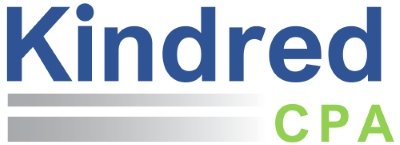Tax season might be behind us (hooray!), but there are still a few smart steps you can take now to wrap things up smoothly and…
 This page is intended to be a “one stop shop” for payroll and tax resources that businesses need in order to stay on top of emerging legislation and guidance. Many governmental entities have established COVID-19 web pages listed below. Each heading is a clickable link that will take you to the appropriate page. We will update this page as new resources and information becomes available – it was last updated 4/7/20 at 4:30 p.m.
This page is intended to be a “one stop shop” for payroll and tax resources that businesses need in order to stay on top of emerging legislation and guidance. Many governmental entities have established COVID-19 web pages listed below. Each heading is a clickable link that will take you to the appropriate page. We will update this page as new resources and information becomes available – it was last updated 4/7/20 at 4:30 p.m.
For information about the CARES Act, including business loans such as the Paycheck Protection Program, Economic Injury Disaster Loans information, and the Employee Retention Credit, click here.
Tax Resources:
IRS Coronavirus Tax Relief
The due date for federal income tax payments and filing returns (including estimated tax payments), originally April 15, has been extended to July 15. No special forms or actions are necessary to qualify for this extension – it’s automatic. If you can’t file by the July 15 deadline, you can request an automatic extension by filing Form 4868 by July 15, 2020 and your tax return will be due on October 15, 2020. To avoid interest and penalties, pay your estimated tax by July 15 with your extension request. Businesses and trusts file Form 7004 to request an extension.
State tax filing and payment deadlines vary by state – see links to Kansas and Missouri below and refer to your state’s Department of Revenue page for further guidance. A chart put together by the American Institute of CPAs of current state requirements can be found here.
Form 990-T due April 15 has been postponed to July 15. However, the due date for a Form 990-T due on May 15 has not been postponed.
Any taxpayers with filing or payment due dates other than April 15 have not been extended.
Normal filing, payment and deposit due dates for payroll, excise tax, estate and gift taxes continue to apply.
Retirement Plan and Health Savings Account Contributions
The due date for 2019 contributions to IRAs, employer contributions made to qualified plans (such as 401(k) matching and profit sharing contributions), and contributions to health savings accounts (HSAs) have all been extended to July 15, 2020. However, excess deferrals to a qualified plan (above the 2019 maximum of $19,000) need to be removed by April 15, 2020 – this date has not been extended.
If a taxpayer owes a 10% additional tax on a 2019 IRA or qualified plan distribution, the reporting and payment of the 10% additional tax has been extended to July 15.
Kansas Department of Revenue
The tax filing and payment deadline for Kansas income tax, originally April 15, has been moved to July 15 (Executive Order #20-13, consistent with the federal deadline). The Kansas deadline for estimated tax payments due April 15 has not been extended.
Missouri Department of Revenue
The state of Missouri’s filing and payment deadline is officially extended to July 15.
Payroll/HR Resources:
Families First Coronavirus Response Act and Paid Leave
- For more details, visit our blog post on this topic.
- Paid leave provisions of the Act take effect on April 1, 2020. In the meantime, if employees become sick or need to stay home with children, follow the procedures your business already has in place for such circumstances.
- Be aware there are two types of paid leave, each with different purposes – Emergency Paid Sick Leave (2 weeks) and Public Health Emergency Leave (10 weeks).
- As of 3/25/20, we’re still awaiting guidance from the Treasury Department on the procedures for employers to claim a tax credit for paying wages under the leave provisions.
Kansas Department of Labor/Unemployment Information
The Kansas Department of Labor has a couple of options available for businesses experiencing a slowdown:
- The Shared Work Program allows for a partial work week and providing partial unemployment benefits to employees. More information is available at www.dol.ks.gov/employers/shared-work-program or by emailing KDOL.SharedWork@ks.gov.
- Employers forced to temporarily lay off employees can assist their employees with filing an application for unemployment benefits by submitting a spreadsheet listing affected employees. Employers who utilize this option will have the ability to communicate directly with the Employer Relations Administrator instead of waiting to speak with a representative at the Unemployment Contact Center. Additionally, instead of receiving an Employer Notice for each employee that files for unemployment insurance benefits, the employer will receive one listing of all claims filed off the spreadsheet. For more information and to download the spreadsheet, click here.
US Department of Labor Q&A on COVID-19 and the Fair Labor Standards Act
The DOL’s webpage provides quick answers to common questions on paying employees during a business slowdown.
The general rule: Hourly employees should be paid for all hours worked. Salaried employees should be paid their salary for the workweek if they work any hours during the week.
Regarding salaried employees, here’s a question we’ve heard recently:
Q: I’ve laid off most of my hourly employees but I still have a couple of salaried managers on the payroll. Our workload has substantially gone down, so my managers are not working full time anymore, nor do we expect them to for a while. Do I have to pay them their full salary?
A: The standard rule from the DOL is that if a salaried employee performs any work in a workweek, they should be paid their regular salary for the entire week. However, if an employee is absent from work for one or more full days to handle personal affairs, the employee’s salary can be reduced to cover those absences. Similarly, if the employer has a “bona fide plan, policy or practice of providing compensation for loss of salary occasioned by both sickness or disability”, but the employee has run out of paid sick leave, the salaried employee’s wages can be reduced to allow unpaid leave.
The DOL specifically says if the employer closes the business for less than a full workweek, the employee must still be paid their full salary.
As an employer experiencing a business slowdown, you do have a couple of options for reducing wages for salaried employees temporarily, neither of which is perfect:
- You can temporarily reduce the employee’s salary to reflect their reduced schedule. This should only be done if you expect the lower amount to last for a while, as the DOL frowns on “flip flopping”. You would also want to ensure that the employee’s pay does not violate the $684/week threshold established for exempt employees effective 1/1/20.
- You can temporarily move the employee to a non-exempt position so they’re paid for the hours they work and would be eligible to receive overtime for working more than 40 hours in a workweek. It may be that the salaried employee’s work responsibilities have changed and they’ve taken on tasks normally done by hourly employees. The DOL would be happy if all employees were paid hourly, so they generally won’t have an issue with this option . . . but once your business returns to normal, be sure you can justify moving this employee back to a salaried position based on facts and circumstances of their restored duties.
It’s best if you make either of these changes effective with the beginning of a new pay period. Be sure to communicate well to your employees so they understand the reasoning behind your actions.
Also, be sure any employment actions you take don’t violate any employment contracts or written agreements you may have with the affected employees.
Other Resources:
Small Business Administration Guidance and Loan Resources
Small business owners in the designated states – including Kansas – are currently eligible to apply for a low-interest loan due to Coronavirus (COVID-19)
Kansas Health and Environment Coronavirus Webpage
Provides updates about coronavirus in the state of Kansas.
Douglas County Coronavirus Webpage
Information, maps and resources for the local area.



